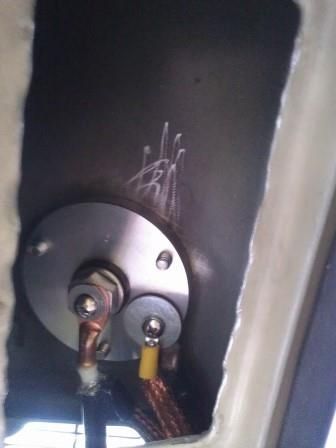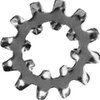You are using an out of date browser. It may not display this or other websites correctly.
You should upgrade or use an alternative browser.
You should upgrade or use an alternative browser.
-
You can now help support WorldwideDX when you shop on Amazon at no additional cost to you! Simply follow this Shop on Amazon link first and a portion of any purchase is sent to WorldwideDX to help with site costs.
-
A Winner has been selected for the 2025 Radioddity Cyber Monday giveaway! Click Here to see who won!
Coax ground to backing plate or roof?
- Thread starter groundwire
- Start date
Ok, then in simple steps, do you have any of this?
Because you'll need the main ingredient in it (copper) to make a galvanic connection and the solution it is embedded with will be the Electrolyte...
USE SMALL AMOUNTS OK? The stuff isn't reactive to you, just it is MSDS stuff so the only thing you're going to do is help that aluminum react GALVANICALLY to your vehicle and your mount.
Hope this helps - I've used this with Semis' with pretty good success and Mirror Mounts seem to last longer using this as a means to offer conductivity.
A little bit goes a long way - so you know...
Just needed to handle a Family issue but to sum this up...
The amount you use is little, and it works best when you use it as a FILLER for gaps that form in the "roughing" of the surface.
You brush a little on, and use a towel, paper or cloth, to remove the excess like you do if your buffing wax - you rub it in and then remove excess,
Again, Aluminum is the anodized part, you have a threaded portion too, so if it must be used, even a star-tooth washer can help bite into the metal and prevent the nut from "backing out" from the aerial whipping around overhead torqueing against the mount. That washer will leave a gap, so the Anti Seize compound works for small gaps, so work accordingly.
Because you'll need the main ingredient in it (copper) to make a galvanic connection and the solution it is embedded with will be the Electrolyte...
USE SMALL AMOUNTS OK? The stuff isn't reactive to you, just it is MSDS stuff so the only thing you're going to do is help that aluminum react GALVANICALLY to your vehicle and your mount.
- The stuff (medium) is a simple anti-seize silicone compound yes, but the copper "flakes" are base metal.
- Helps to begin the process by roughing up the main load bearing surfaces - Vehicle and Plate to remove as much of the Anodized metal that is your insulator.
- Some cotton swabs or foam tip ones .
- Use Alcohol wipes and or Isopropyl towelettes to wipe and clean off excess - again you won't need much.
- It cleans up with regular 70% Isopropyl or you can use Brake Kleen for larger areas if you use too much - just disassemble and restart.
- Once you've used a couple of drops of this stuff, you'll find a lot of other uses on you vehicle for this. Like grounding points for your Battery connections and even threaded bolts that bolt the engine ground lugs to various spots on the vehicles chassis and engine. Even hub to Wheel to keep the hubs from seizing or the Aluminum Magnesium and other exotic metals from reduction and erosion from moisture and salt getting into places and paint chips acerbating their looks - it does act as a sacrificial metal in these cases.
Hope this helps - I've used this with Semis' with pretty good success and Mirror Mounts seem to last longer using this as a means to offer conductivity.
A little bit goes a long way - so you know...
Just needed to handle a Family issue but to sum this up...
The amount you use is little, and it works best when you use it as a FILLER for gaps that form in the "roughing" of the surface.
You brush a little on, and use a towel, paper or cloth, to remove the excess like you do if your buffing wax - you rub it in and then remove excess,
- this allows the copper "flakes" to embed in the rough grooves because it's the malleable part that allows itself to "mold" or press into direct contact
- - the carrier agent, the Silicone, simply provides a working medium for the copper to fill in and shift/settle in better for larger contact surface.
- It also provides a layer of protection from oxides and water entry
- - this process takes time to work but you do get results..
Again, Aluminum is the anodized part, you have a threaded portion too, so if it must be used, even a star-tooth washer can help bite into the metal and prevent the nut from "backing out" from the aerial whipping around overhead torqueing against the mount. That washer will leave a gap, so the Anti Seize compound works for small gaps, so work accordingly.
Last edited:
Wow...Went to the site to find what you're looking at...
Aluminum - hmm...lots of them are Anodized, so the issue of good ground and the type of mount used, both go hand in hand.
Are you using this mount?
When I see "Backing Plate" since the above is a 3-hole punch...
I take it you also are installing this...
Is that correct?
Because I found this - which was helpful but not sure what you're up against...

But this doesn't look exactly like the one I'm thinking you have...
Check out that long ground strap and electrical tape.
Check out that long ground strap and electrical tape.
Seems like every time a see a setup like this....it looks just like that. I agree: UGLY.
Reminds me of these fellas that go to painstaking lengths to carefully measure their dipole and then strip a foot of coax for the feed point!
Thanks guys. I was just wondering if there was a more ground efficient way to do it but it appears not really, even the big comp mobile guys ground to the plate so, to the plate it is.
Star washer, that's a good idea. I don't have one of those on there. Thanks
As I travel near constantly, I ordered a couple of boxes (100-ea) for the thumb-buster price of $15/ea from the McMaster-Carr website. But I also bought some flats, 5/8” #10 screws + miscellaneous to make the buy worthwhile.
Alien Applegate said,
“Internal/External Tooth ONLY!”
www.k0bg.com
“Yassuh, boss, I’m a fixin’ to get right on it”.
.
I use the anti seize between the element sections of aluminum base antennas.
Jet Lube A/S from DX Engineering. See eHam reviews.
Stuff is potent (tiny amounts).
Last year decided to start upgrading, that’s why I got it.
PENETROX and DOW #4 Silicone were also among orders placed.
Quanties are such that they’re “lifetime”.
Some LPS-1 aerosol next (for copper braid per CAL-AV labs). Corrosion Inhibitor. (Mil Spec and Airframe/Powerplant spec’s)
All of these useful in the rest of my life
If there's resistance at DC, that resistance is still there with AC.
Really? A BALUN appears as a dead short to DC but doesn't to AC/RF. Measure the centre section of an Imax 2000 where there's a capacitor and it'll appear as no continuity, open circuit but it doesn't to RF.
That is totally correct. The Gamma matching system is a dead short until you apply RF energy.Really? A BALUN appears as a dead short to DC but doesn't to AC/RF. Measure the centre section of an Imax 2000 where there's a capacitor and it'll appear as no continuity, open circuit but it doesn't to RF.
Completely irrelevant to this discussion. The fact that capacitors and inductors work at AC is in no way "proof" that resistance does not work at AC. Otherwise we would have 26 gauge steel wires delivering utility service to our homes, and RG-174 would be as good as any other coax. After all it has the same capacitance per foot as full size RG-8.Really? A BALUN appears as a dead short to DC but doesn't to AC/RF. Measure the centre section of an Imax 2000 where there's a capacitor and it'll appear as no continuity, open circuit but it doesn't to RF.
If you put a resistor in series with your antenna, that resistor will dissipate energy regardless of whether that energy takes the form of AC or DC. That's how attenuators work.



